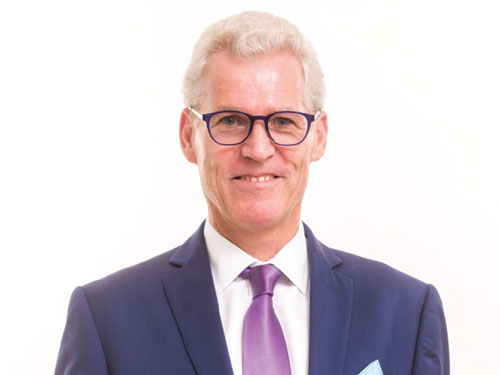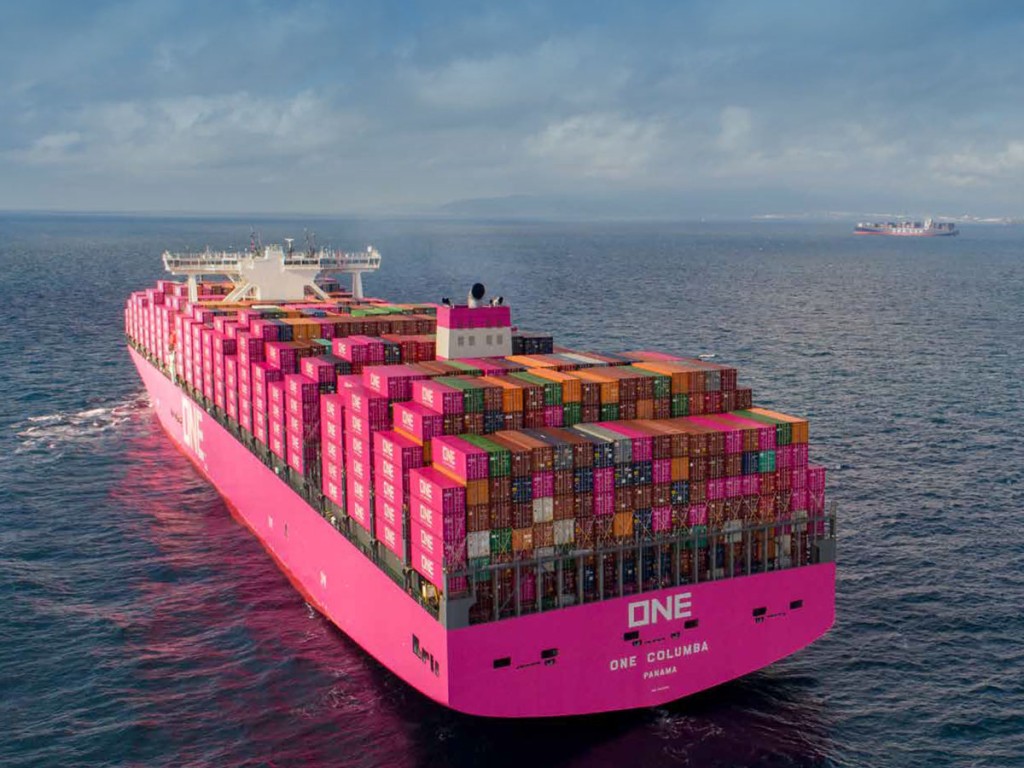Ocean carriers should focus on transitioning from fossil fuels to decarbonized green fuels but expect an added cost of between $2000-$3000 per forty-foot container, warned Jeremy Nixon, CEO of Ocean Network Express (ONE).
Nixon who spoke at the TPM 2023 conference in Long Beach on February 28th said an international regulation or carbon tax will be needed so that all ocean carriers make the investment together and not allow for some carriers to opt out continuing to operate with cheaper fossil fuels that will allow them to undercut decarbonized ocean carriers.
The IMO is the United Nations agency with responsibility for the safety and security of shipping and the prevention of marine and atmospheric pollution by ships.
Nixon said the cost of fuel for container ships today is about $1,000 per forty-foot container: “That's roughly what the cost component is of using carbon fuel. These new fuels are going to be two or three times more expensive. So, potentially $2,000-3,000 will be the future fuel cost of moving a 40-foot container.”

Can Decarbonization Regulations Level the Playing Field?
He called for regulation or a carbon tax because “We as an industry, and we as individual carriers, will pioneer new green solutions, but at the end of the day, if our competitors are running at $1,000 on a 40-foot container and we are running at $2,000 to $3,000 per forty-foot container, then we can't survive.”
As a result, “We need a leveling up, and that's where we need the regulators to step in and set a carbon price. So, either be very specific about which fuels we can use, and which fuels we're going to get rid of, so we all move to the new fuel types and therefore we have a level playing field. Or if that's not going to happen, and we're going to have some of us moving forward with green fuels and others aren't, then we have to level up those costs. And so therefore we look to the IMO to bring in market-based measures where we will have a common carbon price, which is transparent, and we can provide predictability and insight and be very clear on what our future costs will be.”
Even though ocean carriers have strong balance sheets due to high profitability during the post pandemic market surge, these profits will not be enough to make the transition to decarbonized fuels for ships: “The challenge is that we need to spend $3 trillion as an industry on new ships, new fuel systems, et cetera. So, we need those strong balance sheets to start that process. But in terms of the OPEX, the operating cost … if we had to absorb that, that green fuel cost, that would add at least $2 billion to our OPEX … we can't do that individually.”
The higher cost will ultimately be passed on to the consumer: “The whole decarbonization concept is we do it together, we do it globally. We pass it through the supply chain. We all work collectively to decarbonize and green the world. And we need to do that collectively. And we all have to pass on our costs in a logical, transparent way through the supply chain, right to the end customer so that when we go into the store and we look at a product, we can see what its price is, but we can also see what the CO2 footprint is. And we've all contributed towards trying to minimize that CO2 footprint. But it is a reality of what it is.”

Consumers, Decarbonization and Higher Costs
A fellow panelist at the TPM discussion was Julia Bedanova, who is chief operating officer for Million Dollar Baby. Million Dollar Baby was founded in 1990 and is known for providing quality children’s furnishings. For example, beginning with only one crib, they now offer six brands, according to the company.
Bedanova thought there is growing acceptance by consumers for higher prices that support the transition to zero carbon emissions and a curb on global warming: “Yeah, I think doing exactly this is starting the conversation and being the catalyst to say it matters. It is a non-negotiable for the end consumers and for brands. I think more people will understand and become more and more aware about this and more… consumers and brands are asking for it.”
She cited an example where her supply chain partner provided carbon offsets: “I do think that the number one thing I can do is just start those conversations with my supply chain partners. On the outbound front, for example, I made this very clear to my supply chain partner. They came and they actually offered carbon offsets as part of every single shipment I do with them without cost … And to me, that made me that much more of a loyal customer. I'm a big promoter for them. I am telling all of my friends about them. So, you know, I think, I think it's the shippers and the brands that need to come to the table and say, ‘this is needed, and we want this, and we're willing to pay a premium.’ Absolutely.”
Data and Solutions
Another TPM panelist, Paolo Montrone is senior vice president with freight forwarder Kuehne + Nagel. He worried about Nixon’s projected higher ocean freight costs and urged a focus on data: “I believe that in the last five years in terms of data and information, we made a quantum leap forward in the industry in terms of having this data, very precise data available to everyone who wants to look into it. First thing is to realize what we collectively and each single contributor are contributing to CO2 emissions. There are solutions. There are, of course, these solutions as Jeremy (Nixon) explained that are costly. In part, there are also solutions which are not as costly, but there are solutions. The demand is there in part, but of course we need a big, big spike in demand because this will really, really project the interest of the demand. We cannot just wait for the asset owners to basically get this problem all away. So, my message to everyone who is part of any supply chains is: ‘You have to look into your data.’”


